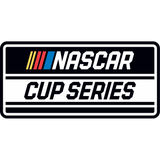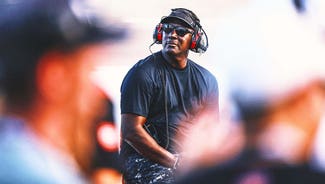
Time to push out pushrods?
As Detroit continues the push to smaller, more efficient engines in street cars, could it be time for NASCAR to follow suit?
With the exit of Dodge, the only manufacturer currently competing in NASCAR that produces a pushrod engine in a showroom car is Chevrolet. Ford went to overhead cams in 1995. When Toyota decided to enter the truck series in 2004, the manufacturer had the daunting task of developing a pushrod V-8 — an engine completely foreign to what the automaker installed in its Tundras or anything else that came off the assembly line.
Considering that NASCAR has taken steps in both marketing and competition to modernize its image, whether with its green approach and consequent change to ethanol, the addition of electronic fuel injection and this season’s Generation 6 rollout, can a renovated engine be far behind?
“It’s long-term, very long-term,” said NASCAR Sprint Cup Series director John Darby. “Four or five years ago we had a similar exercise and it’s about understanding new technology. What we can apply or not apply and what makes sense to do with all of our checklists, the competition and the costs and everything else.
“What we’ve learned from all of our projects, whether it be the engine of five years ago, the electronic fuel injection or the Gen-6 car, when the correct time is devoted and dedicated to the project, the end result comes out 10 times better. We’re not ready for an engine. Everything that we got is being developed, let alone just being current. The lifespan on what we have is going to be considerable. At the same time, we owe it to everybody to start talking about what’s next now so there is enough time to bridge from where we are now to where we might go.”
Darby believes that the final result could still be five years away. He acknowledges that the pushrod engine is antiquated. However, he’s still cognizant of the developmental costs associated with a new engine.
“The fact that we’re developing 850 horse (power) out of a 1955 V8 pushrod engine is incredible enough to where there are a lot of our counterparts in different forms of motorsports that sometimes shake their heads in amazement that, not only can we develop that level of horsepower, but it survives the lifespan that it does,” Darby said. “But right now, it’s the most efficient and, from a cost standpoint, probably one of the less expensive features of our engines.
“If you had a clean sheet of paper and you wanted to go and do the most technical engines in the world with dual overhead camshafts and eliminate that stuff, yeah, it’s great. We can do it. We can still make power at the end of the day and make noise so the fans are happy with all that. But we have to be practical from a cost-management side. That’s a lot of the components of the meetings we have with the manufacturers for the future in what works and what doesn’t.”
Doug Yates, a lifelong engine builder who, in conjunction with Jack Roush, provides engines for the NASCAR’s Ford teams, is encouraged that the sport continues to work on projects that “are more relevant to the car companies.” He also believes that “there is a platform for something different down the road” when it comes to engines if it makes financial sense to the teams.
“We have to make sure that the teams are sustainable and it’s a program that we all plan out so we can afford it. Ford doesn’t produce a pushrod engine. They would like to see things in racing that relate to product development.
“We’re proud of our involvement. In the U.S. this is the biggest form of motorsports, and arguably worldwide. We want to compete on that global scale with Formula One. We just want to do it on a NASCAR budget. We want to have other people attracted to race here as well and I think that (engine) development will be a big catalyst for that change.”
If NASCAR hopes to entice additional manufacturers such as Volkwagen or Nissan or Hyundai, it would make more sense to have an engine that more closely resembles what is already being built on the production line.
Darby believes it’s more practical to address the concerns of the current partners rather than worrying about what might appeal to potential manufacturers.
“You can’t design a world of competition based on who may or may not show up,” Darby said. “Where at the end of the day, going through that effort and our core players are still here. That’s who supports us now, so that all has to be part of the master plan.”
HE’S BACK
Jacques Villeneuve will make his return to NASCAR this weekend at Sonoma Raceway with Phoenix Racing. The race will mark his Cup road course debut.
The 1997 Formula One champ experienced a challenging transition from open wheel to stock cars. However, in recent years, the temperament of the 42-year-old Montreal native is more reflective of a driver that has always raced with bumpers on his car.
While it’s been three years since Villeneuve climbed in a Sprint Cup car — let alone the new Generation 6 model — team owner James Finch isn’t concerned that the driver didn’t test before the race.
“He’s got four hours of practice,” Finch said by phone on Thursday. “He’ll be fine.”
In nine Nationwide Series starts — all on road courses — Villeneuve has one pole (Montreal) four top-fives and six top-10 finishes. His best result was third — three times — twice at Montreal and once at Elkhart Lake.
SOCIALIZING
Following the Jason Leffler memorial on Wednesday, David Stremme tweeted: @DavidStremme Great service in memory of #LEFturn. He was a true racer and someone we will miss at any race track Will not forget him
NUMBERS GAME
20: Starts at Sonoma for Jeff Gordon, who leads the Cup Series in wins (five), top fives (12), top 10s (16) and poles (five). Gordon has been running at the finish in 19 of 20 events.
90: Points collected by Kurt Busch over the last two years at Sonoma, more than any other driver.
5th: Marcos Ambrose's average starting position at Sonoma, the best on the tour
SAY WHAT?
Danica Patrick has seven starts at Sonoma Raceway — just not in a stock car. Patrick raced IndyCars on the course from 2005-2011. Her best finish was fifth place in 2008. But the circuit was laid out differently than the 1.99-mile, 10-turn course for stock cars. So will her prior experience transfer to this weekend?
“Other than being familiar with the garage and pit lane, no,” Patrick said. “The cars are obviously so different that nothing will translate. It’s just such a different style of driving. This also is a slightly different course than what we ran in IndyCar, so nothing really translates. I’m excited to go out to Sonoma, though. I’ve always liked it out there and, hopefully, we can have a great weekend.”

